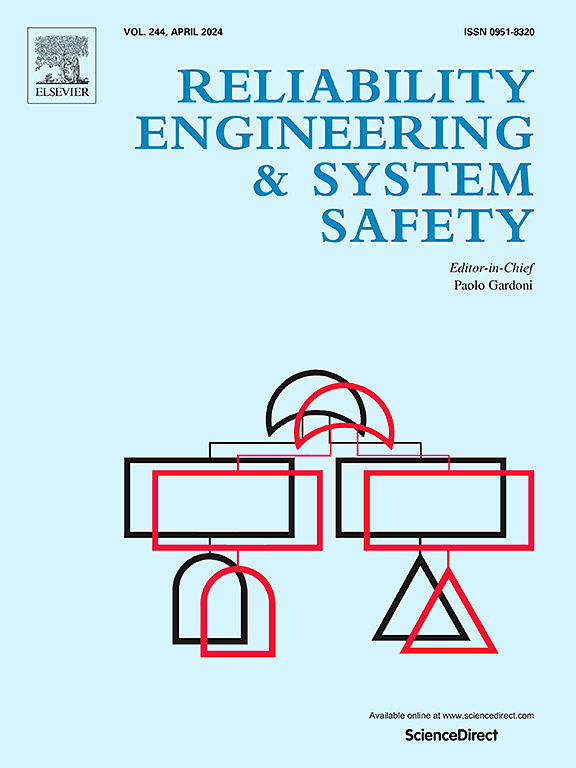Practical semi-supervised learning framework for real-time warning of aerodynamic instabilities: Applications from compressors to gas turbine engines
IF 9.4
1区 工程技术
Q1 ENGINEERING, INDUSTRIAL
引用次数: 0
Abstract
This study introduces a semi-supervised learning framework for the aerodynamic instability warning in gas turbine engines, emphasizing effectiveness, generalization, and practicality. The initial preprocessing involves low-pass filtering and downsampling to mitigate noise and high-frequency disruptions in the pressure signal at the compressor outlet. A 5 ms sliding time window then segments the pressure data, followed by the adaptive wavelet synchrosqueezed transform (AWSST) for sample labeling. To address significant dataset imbalance, an anomaly detection approach is adopted, incorporating feature selection with ReliefF and mutual information, a sparse autoencoder with bidirectional gated recurrent units (BiGRU-SAE), and a warning logic based on reconstruction errors and pressure drop amplitudes. The framework's effectiveness and generalization are evaluated across all datasets and validated through real-time warning experiments on a hardware-in-the-loop (HIL) simulation platform. Results show that our method detects instabilities 20 to 45 ms earlier than monitoring the pressure change rate, with a single-step computation time of approximately 3 ms, well within the requirements for real-time processing. This improvement in early detection can significantly enhance engine safety and performance. Notably, our method demonstrates generalizability across different states of the same engine and between different engines, suggesting its potential for developing a widely applicable warning model with limited data.
气动不稳定性实时预警的实用半监督学习框架:从压缩机到燃气涡轮发动机的应用
本文提出了一种用于燃气轮机气动不稳定性预警的半监督学习框架,强调了该框架的有效性、通用性和实用性。最初的预处理包括低通滤波和下采样,以减轻压缩机出口压力信号中的噪声和高频干扰。然后用5 ms滑动时间窗对压力数据进行分割,然后用自适应小波同步压缩变换(AWSST)对样本进行标记。为了解决严重的数据不平衡问题,采用了一种异常检测方法,结合了ReliefF和互信息的特征选择,带有双向门控循环单元(BiGRU-SAE)的稀疏自编码器,以及基于重建误差和压降幅度的警告逻辑。该框架的有效性和通用性在所有数据集上进行了评估,并通过硬件在环(HIL)仿真平台的实时预警实验进行了验证。结果表明,该方法比监测压力变化率早20 ~ 45 ms检测不稳定性,单步计算时间约为3 ms,完全符合实时处理的要求。这种早期检测的改进可以显著提高发动机的安全性和性能。值得注意的是,我们的方法证明了在同一引擎的不同状态以及不同引擎之间的通用性,这表明它有潜力在有限的数据下开发出广泛适用的预警模型。
本文章由计算机程序翻译,如有差异,请以英文原文为准。
求助全文
约1分钟内获得全文
求助全文
来源期刊

Reliability Engineering & System Safety
管理科学-工程:工业
CiteScore
15.20
自引率
39.50%
发文量
621
审稿时长
67 days
期刊介绍:
Elsevier publishes Reliability Engineering & System Safety in association with the European Safety and Reliability Association and the Safety Engineering and Risk Analysis Division. The international journal is devoted to developing and applying methods to enhance the safety and reliability of complex technological systems, like nuclear power plants, chemical plants, hazardous waste facilities, space systems, offshore and maritime systems, transportation systems, constructed infrastructure, and manufacturing plants. The journal normally publishes only articles that involve the analysis of substantive problems related to the reliability of complex systems or present techniques and/or theoretical results that have a discernable relationship to the solution of such problems. An important aim is to balance academic material and practical applications.
 求助内容:
求助内容: 应助结果提醒方式:
应助结果提醒方式:


